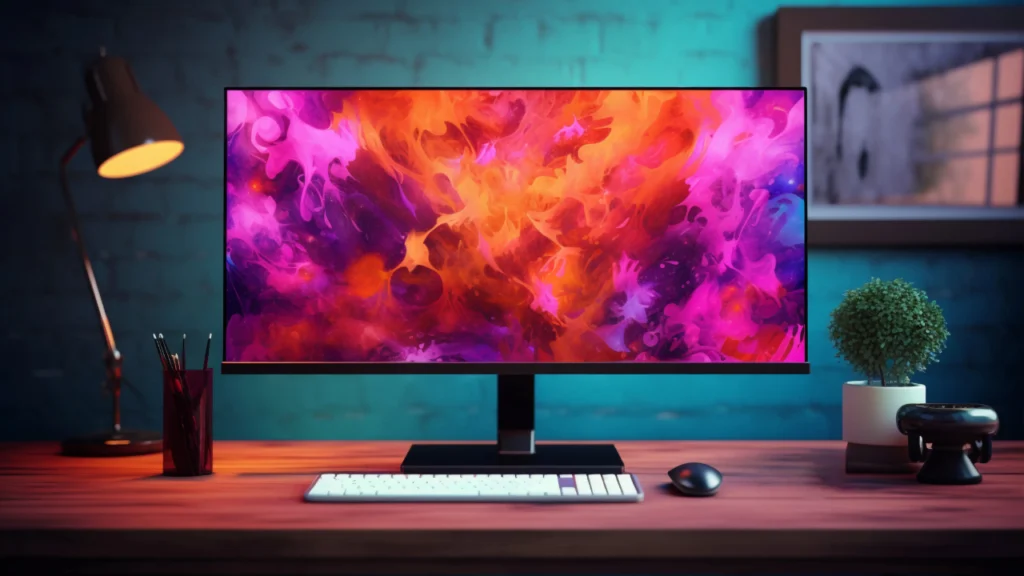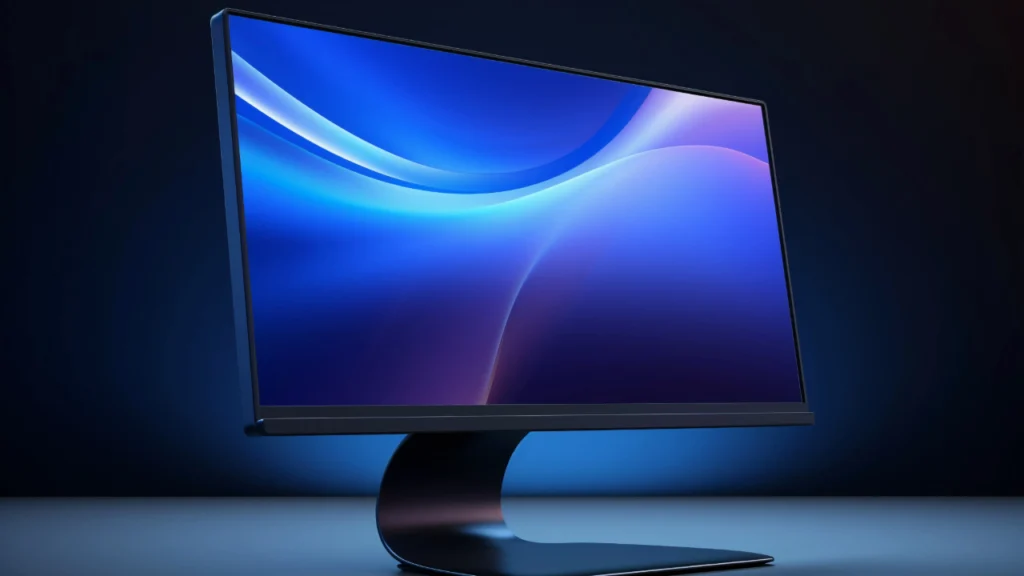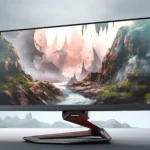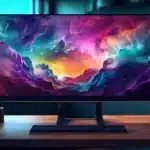Are Curved Monitors Worth It? Debunking Common Myths and Benefits

Over the past decade, curved monitors have become increasingly popular — evolving from niche luxury items to mainstream choices for gamers, professionals, and casual users alike. But with that popularity comes a lot of debate: Are curved monitors really worth it? Or are they just a flashy gimmick?
As we enter 2025, the monitor market is flooded with options, from budget-friendly curved models to ultra-premium displays with staggering specs. So it’s no surprise that potential buyers are skeptical. In this article, we’ll take a deep dive into the benefits of curved monitors, debunk some of the most common myths surrounding them, and help you decide if one is right for your setup.
What Is a Curved Monitor?
Let’s start with the basics. A curved monitor is a screen that bends gently (or dramatically) inward, toward the user. This curvature is designed to wrap around your field of vision, theoretically providing a more immersive and natural viewing experience compared to flat monitors.
Curved displays are available in different curvatures, usually expressed with an “R” number like 1000R, 1500R, or 1800R. The lower the number, the more pronounced the curve. A 1000R curve, for instance, has a radius of 1 meter and closely matches the natural curvature of the human eye, making it one of the most immersive options.
Debunking Common Myths About Curved Monitors
Myth 1: Curved Monitors Are Just for Gamers
While curved monitors have undoubtedly gained popularity in the gaming world, they’re not limited to gamers. Many professionals—including video editors, software developers, and even accountants—benefit from the ergonomics and extended screen real estate curved monitors provide.
Curved ultrawide monitors, for example, make multitasking much more comfortable by allowing users to view multiple windows side-by-side without a noticeable distortion in the peripheral areas. The curvature gently guides your eyes across the screen, which is particularly beneficial for productivity.
Myth 2: Curved Monitors Cause Distorted Images
This is one of the most misunderstood aspects of curved displays. While it’s true that early models sometimes suffered from edge distortion, modern curved monitors are engineered to maintain consistent image quality from center to edge.
In fact, distortion is more likely to occur on large flat monitors, where the edges are further from your eyes and viewed at sharper angles. The curvature of a monitor brings those edges closer, making for a more uniform visual experience—especially on ultrawide or 32-inch+ screens.
Myth 3: They’re Bad for Viewing From an Angle
This one is partially true — curved monitors are indeed designed to be viewed from the center. But this only becomes a problem if multiple people are trying to view the screen at once, which isn’t a common use case for personal monitors.
If you’re the sole user, and you’re sitting directly in front of your screen as most people do, then a curved display offers a perfectly comfortable and focused experience. It’s when you start watching from the sides that the curve may appear awkward.
Myth 4: They’re Too Expensive
While curved monitors used to be significantly more expensive than flat ones, that gap has narrowed considerably. You can now find a wide range of curved monitors to fit nearly every budget. In fact, there are several high-quality options reviewed on WiredTech’s list of best curved computer monitors that offer excellent value for the price.
Benefits of Using a Curved Monitor

Now that we’ve addressed the myths, let’s look at the real, tangible advantages that curved monitors bring to the table.
1. Enhanced Immersion
This is perhaps the most obvious benefit. A curved screen wraps around your field of vision, pulling you into the experience—whether you’re gaming, watching a movie, or editing a video.
In gaming, this immersion can be a game-changer (pun intended), especially for genres like racing, flight simulation, and first-person shooters. The environment feels more lifelike because the curved display mimics how you naturally see the world: not flat, but curved.
2. Reduced Eye Strain
A lesser-known benefit is the reduction in eye fatigue. On flat monitors, especially larger ones, your eyes need to constantly refocus when looking at different parts of the screen. Curved displays, however, maintain a more consistent focal distance across the entire screen.
This subtle change in how your eyes move and focus can make a big difference during long sessions—whether you’re working, gaming, or just browsing. It’s one reason many office workers are switching to curved monitors for all-day use.
3. Wider Field of View
Curved monitors, especially ultrawide models, expand your horizontal field of view. This isn’t just immersive — it’s practical. You can have more windows open side by side, improving multitasking efficiency. It also allows for a more cinematic experience when watching widescreen content.
The curvature naturally draws your attention to the center while keeping peripheral information easily accessible. This is especially helpful in creative workflows, such as timeline editing in video or digital painting.
4. Better Focus and Privacy
The gentle wrap-around effect helps eliminate some of the distractions that come from peripheral visual clutter. By subtly blocking out surroundings, a curved monitor keeps you more focused on your screen.
Additionally, the curve makes it harder for people to glance at your screen from the side — a nice perk if you’re working with sensitive data or just value your privacy.
5. Space-Efficient Design for Larger Displays
Ironically, large curved monitors often fit better on desks than equivalent flat panels. A wide flat monitor requires the user to sit further back to view the whole screen, which in turn demands more desk depth. The curved design keeps everything within comfortable reach even at wider sizes.
When a Curved Monitor Might Not Be Ideal
As great as curved monitors are, they’re not perfect for every situation. Here are a few scenarios where a flat monitor might still be the better choice:
Multiple Viewers: If you often share your screen with others, such as in a collaborative workspace or client presentation setting, a flat screen will offer more consistent image quality from all angles.
Wall Mounting: Curved monitors are not as aesthetically pleasing or practical when wall-mounted. The curvature can look odd from a distance and may even limit wall-mount compatibility.
Graphic Design & CAD Precision: If you require pixel-perfect accuracy or need to work with straight lines, some professionals feel more confident with flat displays, although this concern is diminishing with newer high-resolution curved monitors.
Are Curved Monitors Worth It in 2025?
Yes — for most users, curved monitors are absolutely worth it.
The immersive experience, reduced eye strain, enhanced multitasking, and elegant aesthetics all make them a compelling choice for a wide variety of use cases. As technology continues to evolve, we’re seeing even better build quality, image clarity, and affordability, making 2025 a great time to make the switch.
That said, they’re not a universal solution. Whether or not a curved monitor is right for you depends on how you use your computer. Gamers, content creators, and solo professionals are often the biggest beneficiaries, while casual users or collaborative workspaces may find flat screens more practical.
If you’re ready to explore the best options out there, check out this detailed guide to the best curved computer monitors for reviews, comparisons, and recommendations tailored to different needs and budgets.
Final Thoughts
The debate over curved vs. flat monitors will likely continue as both technologies improve, but one thing is clear: curved displays are more than just a trend. They offer real, measurable benefits for many types of users and use cases.
As screen time becomes an even bigger part of our daily lives, investing in a monitor that supports both productivity and comfort is more important than ever. If you’re looking to upgrade your setup in 2025, a curved monitor is not only a modern choice — it might just be the smartest one.






